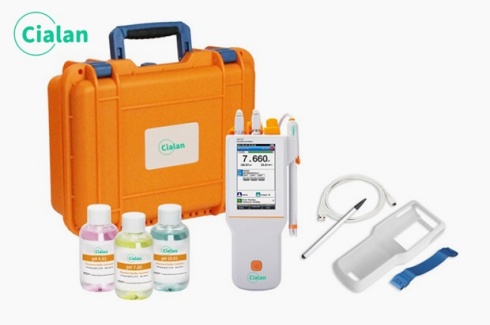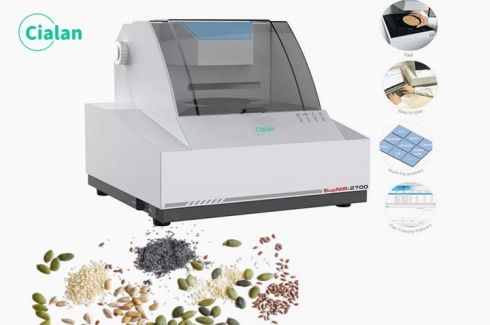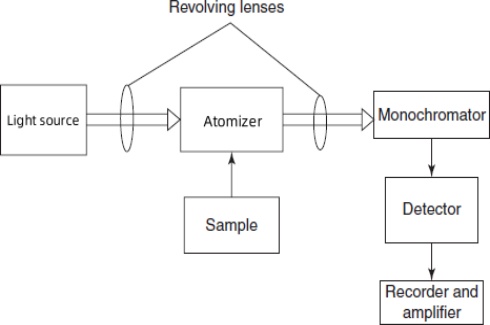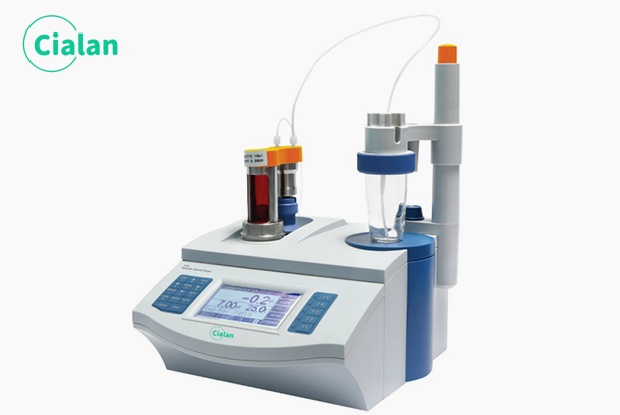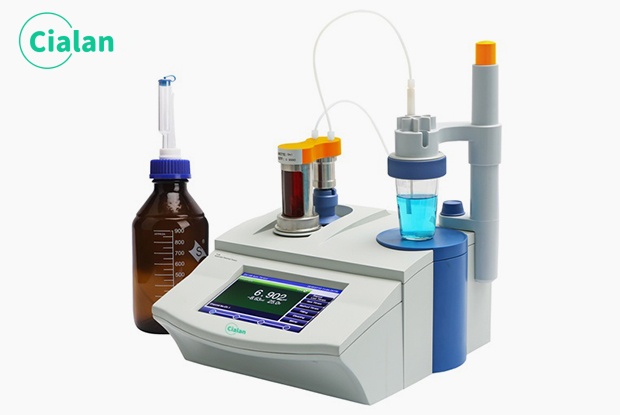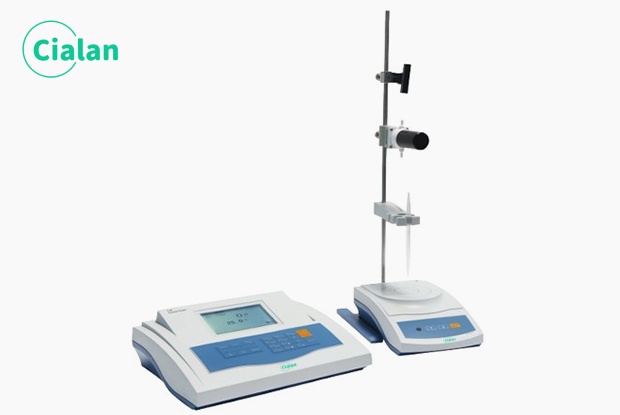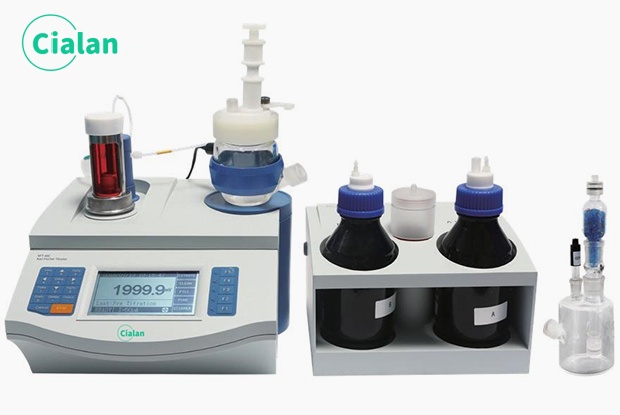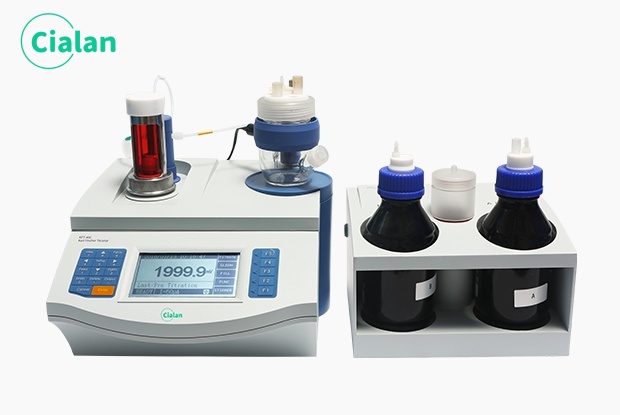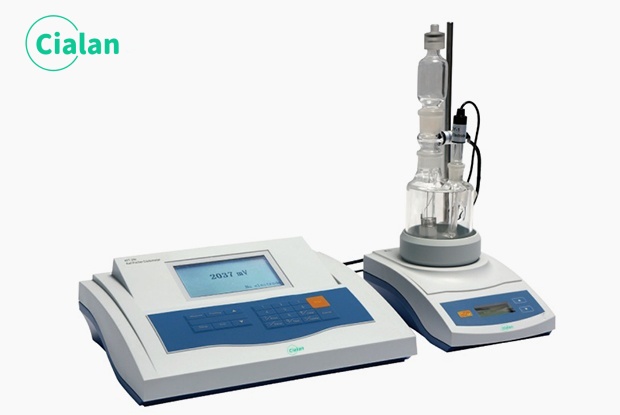GC MS Test FAQ Guide : A Comprehensive Sources For Drug Testing Researchers
Gas chromatography mass spectrometry machine is an analysis-changer for unknown substances, providing high-resolution and high-sensitivity GC MS diagram and GC MS data. This FAQ guide highlights key points for laboratory researchers, drug testing experts, and food safety officers looking to obtain the most appropriate GC and MS. Popular GC MS chromatography include single quadrupole GC MS, triple quadrupole GC MS, and time-of-flight GC MS, portable gas chromatography mass spectrometer, all of which are designed for precision analysis in laboratories, materials science, and drug R&D, among other research fields.
Quantitative and qualitative analysis are the top priority for MS GC, and gas chromatography separations and quadrupole mass analyzers ensure analytical precision. It is vital to work with a reliable manufacturer, taking into account their quality, certification and after-sales support.
GC MS machine has become an irreplaceable tool in the analysis of complex samples. Whether you want to improve analytical accuracy, speed up analysis or enhance satisfaction with your results, GC MS instrument is the smart choice. Access the complete FAQ guide to learn how GC/MS test can take your compound analysis capabilities to the next level!
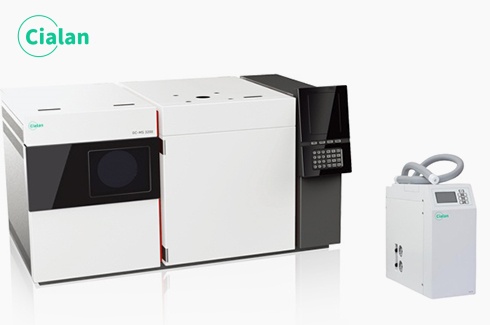
What Is Gas Chromatography Mass Spectrometry?
Gas chromatography mass spectrometry GC MS is an analytical instrument that combines the techniques of gas chromatography (GC) and mass spectrometry (MS) to efficiently separate the volatile components of a compound, detect and identify these components and their concentrations.
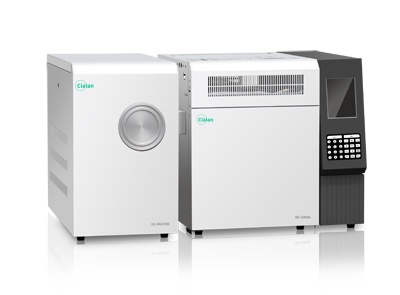
What Are The Components Of GC MS?
GC MS testing is mainly composed of the following parts:
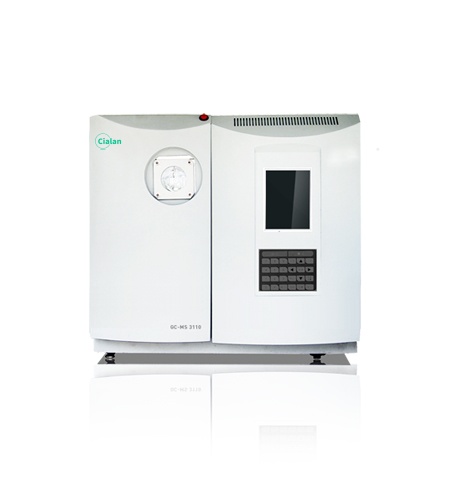
How Much Does a GC MS Cost?
It wouldn’t be right to mention one fixed amount.
The GC MS price will vary from model to model.
To know the exact price, you can ask your preferred manufacturer to provide a quotation for the type of GC/MS testing you want.
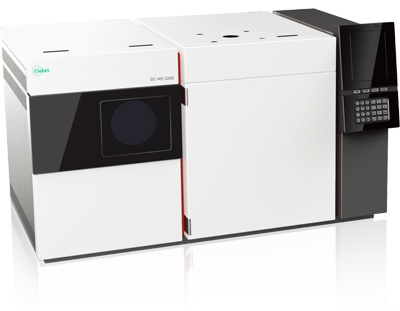
How Does Gas Chromatography Mass Spectrometry Work?
The sample enters the gas chromatography through a manual or autosampler and passes through the inlet port into a carrier gas (often helium). The liquid sample is vaporized in the heated inlet port and then transferred to the analytical column in gaseous form.
Components of the sample are separated based on differences in their partitioning between the mobile and stationary liquid phases or, for more volatile gases, differences in their adsorption on the solid phase
After the sample is separated, it is not necessary to achieve a complete baseline separation for GC MS analysis, unless the analytes are isomers. The separated neutral molecules enter the mass spectrometer through a heated transmission line for detection.
Within the mass spectrometer, the neutral molecules are first ionized, most commonly by electron ionization (EI ). During EI, electrons generated by a heated filament are accelerated at 70 eV, knocking an electron out of the molecule to produce a molecular ion, which is a radical cation. This high-energy ionization produces an unstable molecular ion and excess energy is lost through fragmentation. The breaking of bonds leads to the loss of free radicals or neutral molecules, and molecular rearrangements can occur.
The next step is to separate ions of different masses based on their mass-to-charge ratio (m / z), which is done by a mass spectrometer.
After the ions have been separated by the mass analyzer on the basis of m / z, they arrive at the ion detector, where the signal is amplified by an electron multiplier (used in most low-resolution MS) or a multichannel plate (used in most HRMS instruments). The signal is then recorded by acquisition software on a computer, generating a chromatogram and a mass spectrogram for each data point.
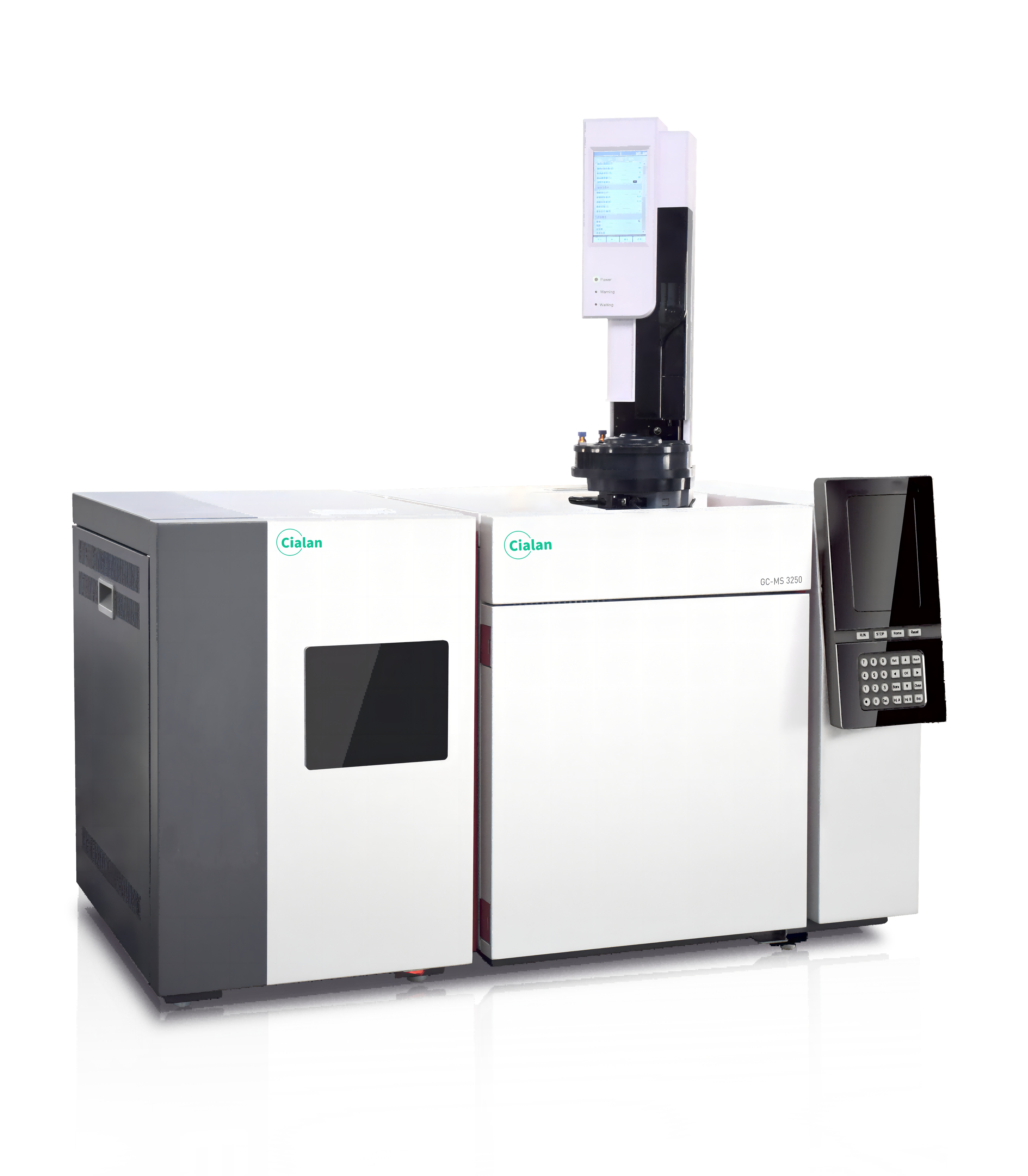
What Is The Application Of GC-MS Systems?
Environmental Monitoring
Detects pollutants such as formaldehyde, dioxins, PAHs, pesticide residues in air, soil and water.
Food Science
Analyze flavors, pesticide residues, additives, carcinogens in food to ensure food safety.
Pharmaceutical R&D
Used for identification and purity analysis of drug components, and drug metabolism/drug residue studies. Identification of volatile components and active ingredients in traditional Chinese medicine. Detection of doping agents.
Forensic Applications
For drug detection, explosive residue analysis, etc.
Chemical Analysis
For qualitative and quantitative analysis of complex organic compounds.
Petrochemical
For petroleum composition analysis and chemical product quality control. Such as alkanes, olefins, alkynes, aromatic hydrocarbons, sulfur-containing compounds, nitrogen-containing compound detection.
Electronics industry
RoHs2.0 analysis.
Textile Industry
Detection of harmful substances in textiles.
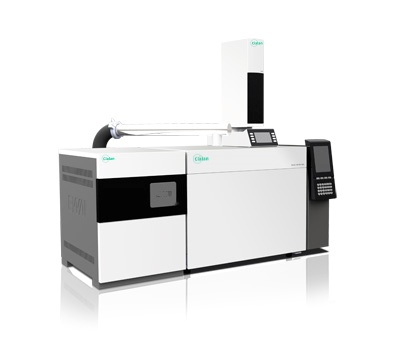
What Is Gas Chromatography Mass Spectrometry Principle?
The GC MS principle is an analytical instrument that measures the mass-to-charge ratio (m/z) of ions. Gas chromatography is used to separate compounds, followed by mass spectrometry to break the molecules into fragments for molecular weight determination.
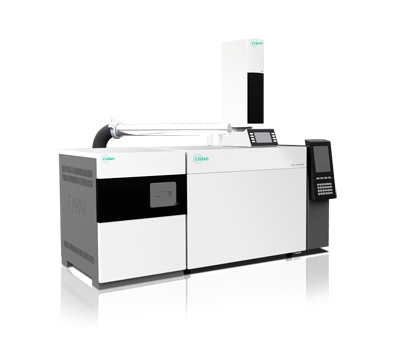
How To Read GC MS Results?
The test report of gas chromatography mass spectrometry instrumentation mainly includes :
Sample information: sample name, sample collection method, sample sampling time.
Total Ion Flow Diagram: The components separated by chromatography continuously enter the mass spectrometry, which now needs to be scanned for data acquisition, and each scan gets a mass spectrometry diagram, and all the ion intensities in each mass spectrometry diagram are added up to get a total ion flow intensity. The ion intensities are then plotted as vertical coordinates and the time as horizontal coordinates, with each chromatographic peak representing a compound.
Chromatographic peak information: RT is the retention time, which can visualize the time of the substance out of the front. Peak area percentage can calculate the concentration ratio of different compounds in the substance according to the peak area percentage.
Mass Spectral Information: According to the comparison of NIST spectral libraries, the most probable molecular formula and the best matching compound molecular formula, the sample mass spectra and the mass spectra of standard compounds are given as a comparison.
NIST library matching provides a reference or possibility of substance identification, the higher the corresponding score, the higher the match and the higher the confidence.
Compound Summary: The most likely compound and molecular formula, the CAS code of the compound response, and the library comparison score are given based on the library comparison results.
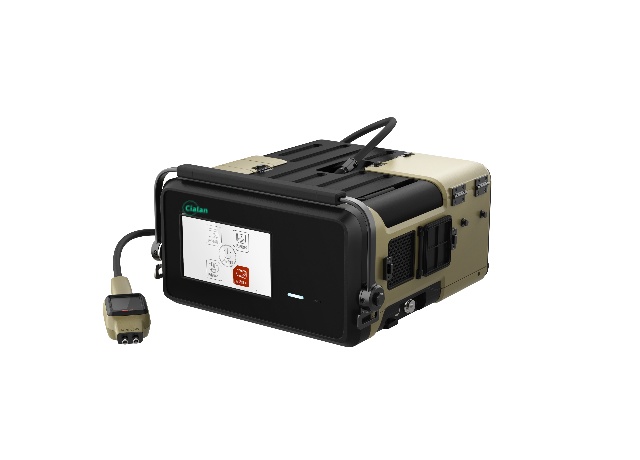
How To Do GC MS Sample Preparation?
Liquid sampling: Liquid 0.5 ml or more without water, acid, alkali, heavy gold salts, fatty acids need to be derivatized and other treatments.
Headspace sampling: Gas, liquid or solid samples are injected directly into a 10 or 20ml GC MS headspace vials.
Gas sampling: The sample volume depends on the volume of the gas bag generally need to fill the bag volume of
50% and above..
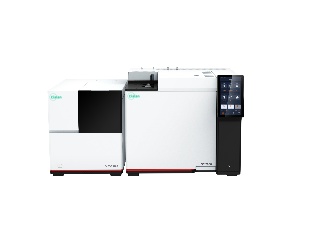
How To Use a GC MS?
Sample pretreatment
Purpose: To remove interfering substances, enrich the target compounds and improve the analytical sensitivity.
Methods: According to the nature of the sample, select the appropriate extraction and purification methods, such as liquid-liquid extraction, solid-phase extraction, supercritical fluid extraction and so on.
Instrument preparation
Check gas tightness: Make sure the gas tightness of the GC MS instrumentation is good to avoid gas leakage affecting the test results.
Selection of column: Select a suitable column according to the test requirements to ensure that the components in the sample can be effectively separated.
Setting parameters: Set the appropriate temperature program, carrier gas flow rate and other parameters, and tune the mass spectrometer to ensure that the instrument is in the best working condition.
Sample injection and analysis
Sample injection: inject the processed sample into the system. Separation and detection: The samples are separated in the column and then entered into the mass spectrometer for detection. In this process, the running status of the instrument should be closely monitored to ensure the completeness and accuracy of data collection.
Data Processing
Analyzing Mass Spectrometry: Analyze the collected mass spectrometry by using professional data analysis software.
Comparison of standard spectral library: Determine the type of organic matter in the sample by comparing the standard spectral library or analyzing the mass spectra manually.
Calculate the content: Calculate the content of each component according to the peak area or peak height of the chromatography peaks.
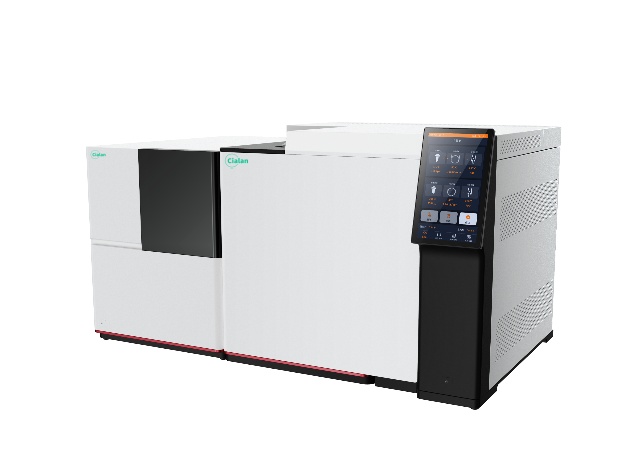
Advantages And Disadvantages Of GC MS.
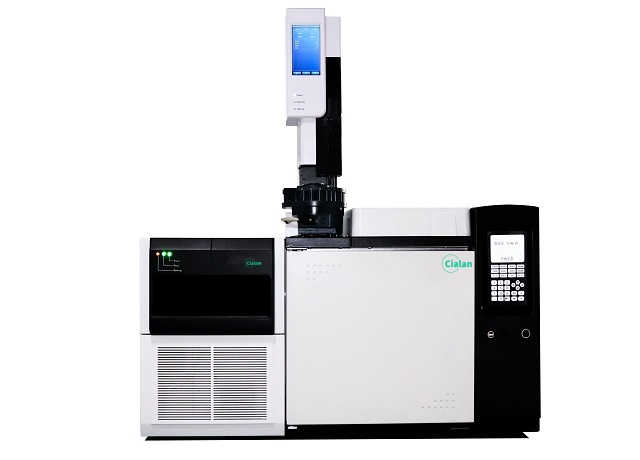
GC MS Maintenance and Care
To ensure the stable performance and service life of the gc ms spectroscopy, it is necessary to carry out regular routine cleaning and maintenance, such as cleaning the surface of the instrument, the sample inlet and the ion source, and checking and replacing the molecular pump oil. Meanwhile, it is also necessary to control the temperature and humidity in the laboratory, avoid magnetic field interference, and keep the room clean.
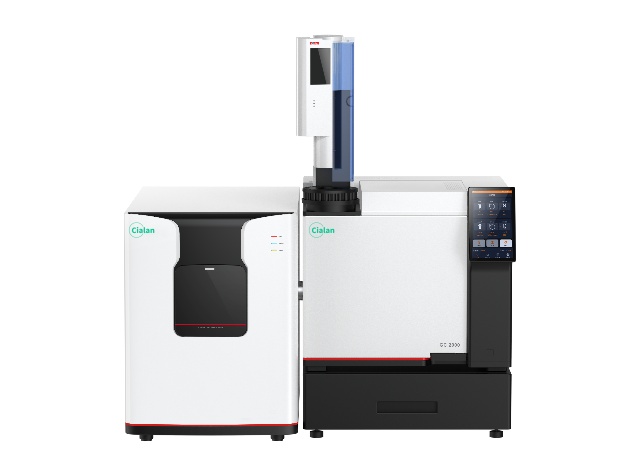
Can a GC MS Test Be Wrong?
Gas chromatography mass spectrometry GC-MS is a high-precision, high-sensitivity analytical technique, but its results may still be inaccurate or erroneous due to a variety of factors, such as contamination of the sample, non-standardized operation, improper selection of the column, insufficient temperature, mismatch of the spectral libraries, matrix interference, and so on, and it is necessary to avoid mistakes through standardized operation and professional training.

Does GC/MS Test For Everything?
GC MS analyzer cannot detect all substances.
It mainly detects volatile organic small molecule substances, such as solvents, ethers, ketones, and so on.
Compositional analysis of unknown substances is a complex and cumbersome systematic project, which requires pre-treatment of samples, graphical analysis, and testing the engineer's knowledge of the industry.

What Drugs Can GC-MS Detect?
Commonly detected drugs: sedative-hypnotics/analgesics/drugs/stimulants/cannabis ingredients/antidepressants and antipsychotics/anesthetics/ketamine GHB.

What Does a GC MS Test For?
Volatile and semi-volatile compounds:
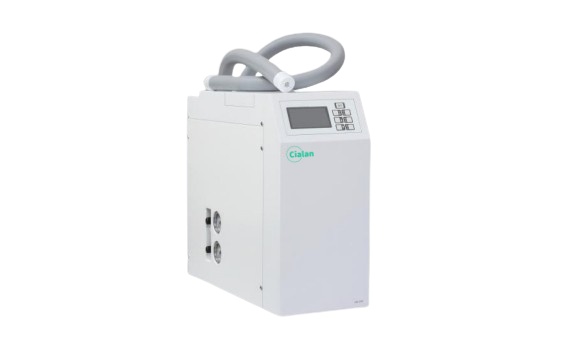
What Is a GC-MS Used For?
High resolution GC MS is used for detecting many types of compounds, such as analyzing volatile and semi-volatile small organic compounds.
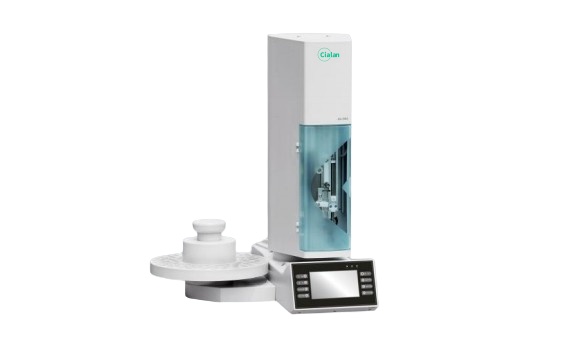
What Does GC MS Tell You?
GC MS chemistry is mainly used for the identification of volatiles, to determine the composition and content of unknowns, it can tell us what small molecules the sample is composed of and what their structure is like.
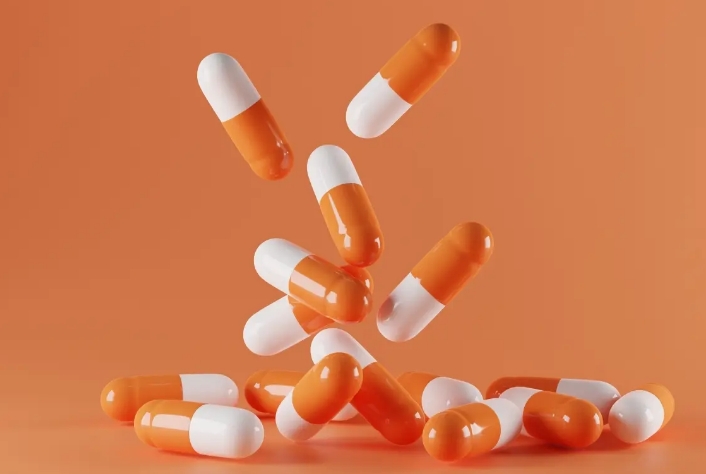
Why Is GC-MS So Accurate?
GC achieves efficient separation of components in complex mixtures by means of a column and high-precision temperature control, reducing interferences caused by co-evolution.
MS achieves accurate characterization by forming a mass spectrum from fragment ions generated by ionization through a high-resolution four-stage rod mass analyzer, which is matched to a library of standard spectra (NIST).
The combined use of GC and MS ensures accurate and reproducible analytical results.
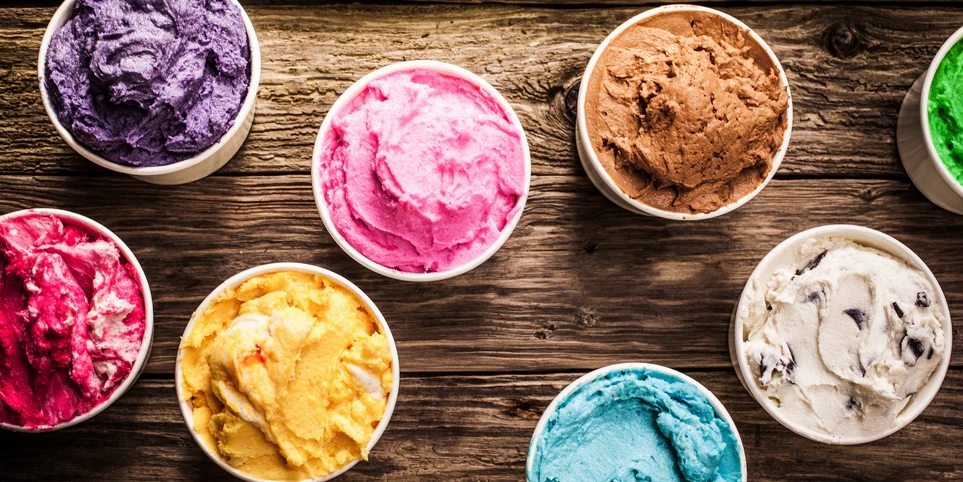
Is GC-MS Qualitative Or Quantitative?
GC MS device is a versatile analytical tool that enables both qualitative analysis of compounds through mass spectra and quantitative analysis through chromatographic peak response values.
The components of a compound are first separated, and then the structure of the compound is determined by ionizing the compound and analyzing the mass-to-charge ratio (m/z) of its fragment ions to generate a characteristic mass spectrogram, which is matched to a library of standard mass spectra.
A linear relationship between peak area and concentration was established by using standards of known concentration.
Add internal standards to correct for instrument fluctuations and improve accuracy. Detect and determine the content for the characteristic ions of the target compound.
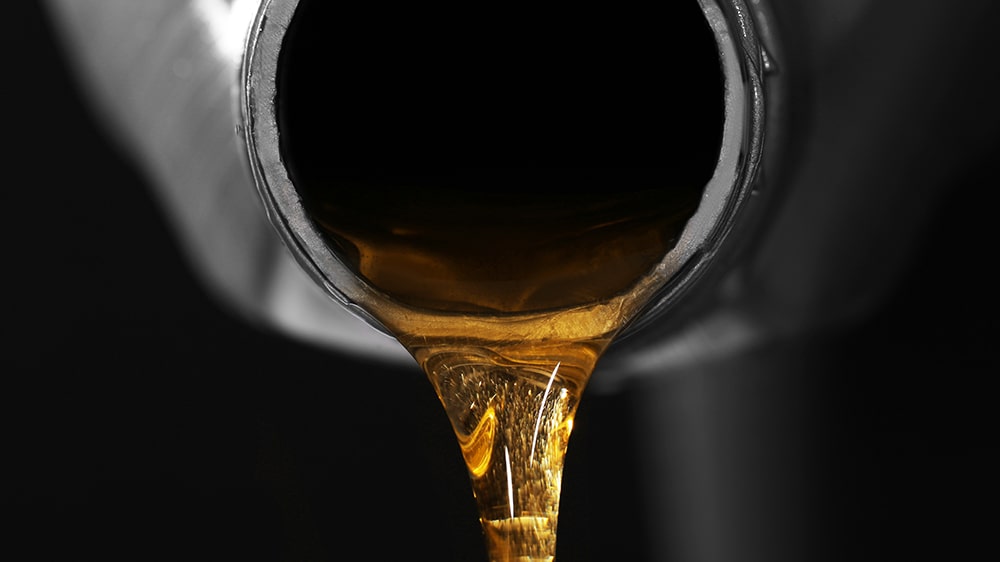
Classification Of Mass Spectrometry

GC MS Vs GC FID

GC MS Vs GC IMS

LC-MS Vs GC-MS

GC-MS Vs GC-MS MS

Gas Chromatography Vs Mass Spectrometry

Which Gases Are Used In GC-MS?
For GC MS instruments, it is recommended to use helium as carrier gas, not nitrogen.

Why Is Helium Used In GC-MS?
Because GC MS equipment usually uses EI source, the ionization energy of EI source is higher, and it needs a gas with higher ionization ability as carrier gas, which can reduce the background interference.
The ionization energy of nitrogen is 15.6eV, which is close to the ionization energy of general organic compounds, and it is easy to be ionized, and there will be a relatively large background interference. Moreover, the fragment ions of nitrogen are easy to overlap with the fragment ions of some compounds, which will result in a high background, and it is easy to interfere with the low mass range of the total ion flow diagram, and it will also have an effect on the relative abundance of ions, so it is not recommended that nitrogen be used as a carrier gas in the GC. Therefore, it is not recommended to use nitrogen as the carrier gas in carrier gas chromatography.
Helium is chemically inert, with an ionization energy of 24.6 eV, which is the highest among all gases. It will not affect the baseline of the chromatogram due to unstable airflow, and the relative molecular mass of helium is only 4, which makes it easy for other molecular components to be separated, and in general will not have a large background interference to the mass spectrometry. Nitrogen has a larger molecular weight than helium and is more difficult to vacuum for the same volume of gas.

What Solvent Is Used For GC-MS?
GC MS lab dissolves the target analytes homogeneously by means of high-purity solvents to avoid the introduction of background interfering contaminants. Common solvents include methylene chloride, hexane, methanol, ether, acetone, acetonitrile, toluene, and so on.

Why Is GC Coupled With MS?
The mass spectrometry is a good instrument for structure identification, but is not useful for separation of mixtures.
Chromatography is a good instrument for separation, but the qualitative ability is very poor, the two together, not only can the unknown components of the mixture can be characterized, but also can be used for quantitative analysis.
Since the sample is gaseous after separation from the gas chromatography column and the mobile phase is also gas, it is easiest to combine the two instruments because it matches the sampling requirements of mass spectrometry.
GC MS service is widely used for the separation and identification of complex components. With the high resolution of GC and the high sensitivity of MS, it is an effective tool for the characterization and quantification of drugs and metabolites in biological samples.
GC MS technique coupling in many areas of analytical testing and research plays an increasingly important role, especially in the routine detection of many organic compounds has become a necessary tool. For example, the environmental protection field in the detection of many organic pollutants, especially some of the lower concentration of organic compounds, such as dioxin, etc., in the standard method provides for the use of GC-MS instruments; Drug research, production, quality control, as well as import and export of many aspects of the use of GC-MS testing;

How To Buy A GC MS Machine From China?
Importing high resolution GC-MS from China can be difficult for those who are new to international imports.
Purchasing from a reputable manufacturer and supplier eliminates hassle of logistics, as they handle the safe and reliable delivery of the product directly to your place.
When buying the gc/ms testing labs, it is important to keep the following points in mind:
1. Confirm that your selected supplier can securely export and deliver the machine, and ensure that your agreement includes all essential shipping information.
2. Choose the delivery way (by sea, air, or express) based on your preference.
3. Remember to factor in duty imports and taxes when calculating the total cost.

How Does a Manufacturer Deliver The Standard GC MS?
Safe shipping is so important as quality manufacturing.
A responsible manufacturer should deliver your conduct meter safely.
Most GC MS manufacturers use export cartoon case to pack the device.
You should read all the necessary instructions available on the sides of the boxes before boxing.

Is There Any Warranty On GC MS Machine?
For optimal performance, it is important to regularly maintain your gas chromatography mass spectrometry equipment, so it can operate efficiently for an extended period. It is essential to be aware of the warranty coverage for your equipment, as it ensures that any manufacturing issues will be repaired at no additional cost by the supplier. Therefore, it is recommended to purchase a gas chromatography mass spectrometry lab from a manufacturer that offers warranty services —Cialan.
Reputable gas chromatography mass spectrometry system manufacturers typically provide a 1-year warranty. for example, offers complimentary repair and maintenance services during the first year.
Before purchasing a mass spectrometer gas chromatography, it is advisable to review the warranty period and other associated terms and conditions.

What After-Sale Service Does A GC MS Machine Provide?
The reliable china mass spectrometry and gas chromatography suppliers offers the following after-sale services:
1. Secure product delivery.
2. Thorough inspection prior to installation.
3. Complimentary online guidance for device installation and maintenance.
4. Free training for your users.
5. Regular assessments of your GC MS lab equipment.

Can You Do OEM&ODM For GC MS Machine?
Yes, Cialan can do OEM#OEM for our users, just send us your requirements for titrator equipment.

Where To Find GC MS Machine Manufacturers?
Numerous online directories can connect you with GC-MS machine manufacturers.
A simple search for "top-rated laboratory GC-MS laboratory manufacturers" yields multiple options. However, it's essential to exercise caution when selecting a manufacturer from online search results. Before making a decision, conduct thorough research on the company's background and reputation. Look up reviews on “Google” and reputable review sites to gauge their credibility.
Additionally, It's also crucial to review their portfolio of request that potential manufacturers share examples of their previous work to ensure they meet your standards.

How To Choose A Right GC MS Machine?
What is the sample to be measured?
Is the analysis Qualitative Or Quantitative?
What is the budget?

What Should You Look For In Good GC MS Machine?
The best GC MS machine needs to meet the core requirements of High precision and sensitivity, simplicity of sample pretreatment, variety of application and data reliability.
Quantitative and qualitative analysis are the top priority for MS GC, and gas chromatography separations and quadrupole mass analyzers ensure analytical precision. It is vital to work with a reliable manufacturer, taking into account their quality, certification and after-sales support.
GC MS machine has become an irreplaceable tool in the analysis of complex samples. Whether you want to improve analytical accuracy, speed up analysis or enhance satisfaction with your results, GC MS instrument is the smart choice. Access the complete FAQ guide to learn how GC/MS test can take your compound analysis capabilities to the next level!

What Is Gas Chromatography Mass Spectrometry?
Gas chromatography mass spectrometry GC MS is an analytical instrument that combines the techniques of gas chromatography (GC) and mass spectrometry (MS) to efficiently separate the volatile components of a compound, detect and identify these components and their concentrations.

What Are The Components Of GC MS?
GC MS testing is mainly composed of the following parts:
| Gas Chromatography Part | |
| Gas circuit system | Provide pure and stable flow rate carrier gas for the instrument, generally used inert gases such as nitrogen or helium. It mainly includes high-pressure cylinder, pressure reducing valve, purification tube, pressure stabilizing valve, flow meter and other components. |
| Sample inlet system | Responsible for introducing the sample into the gas chromatograph. Common injection methods include liquid injection, gas injection and solid injection. |
| Column separation system | The core component is the chromatographic column, which is the key to realize the separation of components in the sample. The column is filled with a stationary phase, which can be divided into packed column and capillary column according to the different properties of the stationary phase. |
| Temperature control system | It is used to accurately control the temperatures of the gasification chamber, column and detector, etc. The temperature of the gasification chamber must ensure that the samples can be separated from each other. The temperature of the gasification chamber should ensure that the sample can be vaporized quickly, and is generally slightly higher than the boiling point of the component with the highest boiling point in the sample; the temperature of the column is controlled according to the nature of the sample and the separation requirements of the program temperature or constant temperature to ensure the accuracy and stability of the detection signal. |
| Mass Spectrometry | |
| Ion Source | It is the first step of mass spectrometry to convert the sample molecules into ions. Common ion sources include electron bombardment ionization source (EI), chemical ionization source (CI), and so on. |
| Mass analyzer | It is the core component of mass spectrometer, which separates and detects ions according to their mass-to-charge ratio (m/z). |
| Detector | It is used to detect the ions separated by the mass analyzer and convert the ion signal into electrical signal for amplification and recording. Common detectors include electron multiplier, photomultiplier tube, etc. |
| Vacuum system | Provide high vacuum environment for ion source, mass analyzer and detector of mass spectrometer. It is generally composed of mechanical pump and turbo molecular pump to form a two-stage vacuum system. The mechanical pump acts as a pre-stage pump to reduce the pressure of the system to a certain degree, and then starts the turbo molecular pump to further increase the vacuum level so that the instrument can reach the required high vacuum state internally. |

How Much Does a GC MS Cost?
It wouldn’t be right to mention one fixed amount.
The GC MS price will vary from model to model.
To know the exact price, you can ask your preferred manufacturer to provide a quotation for the type of GC/MS testing you want.

How Does Gas Chromatography Mass Spectrometry Work?
The sample enters the gas chromatography through a manual or autosampler and passes through the inlet port into a carrier gas (often helium). The liquid sample is vaporized in the heated inlet port and then transferred to the analytical column in gaseous form.
Components of the sample are separated based on differences in their partitioning between the mobile and stationary liquid phases or, for more volatile gases, differences in their adsorption on the solid phase
After the sample is separated, it is not necessary to achieve a complete baseline separation for GC MS analysis, unless the analytes are isomers. The separated neutral molecules enter the mass spectrometer through a heated transmission line for detection.
Within the mass spectrometer, the neutral molecules are first ionized, most commonly by electron ionization (EI ). During EI, electrons generated by a heated filament are accelerated at 70 eV, knocking an electron out of the molecule to produce a molecular ion, which is a radical cation. This high-energy ionization produces an unstable molecular ion and excess energy is lost through fragmentation. The breaking of bonds leads to the loss of free radicals or neutral molecules, and molecular rearrangements can occur.
The next step is to separate ions of different masses based on their mass-to-charge ratio (m / z), which is done by a mass spectrometer.
After the ions have been separated by the mass analyzer on the basis of m / z, they arrive at the ion detector, where the signal is amplified by an electron multiplier (used in most low-resolution MS) or a multichannel plate (used in most HRMS instruments). The signal is then recorded by acquisition software on a computer, generating a chromatogram and a mass spectrogram for each data point.

What Is The Application Of GC-MS Systems?
Environmental Monitoring
Detects pollutants such as formaldehyde, dioxins, PAHs, pesticide residues in air, soil and water.
Food Science
Analyze flavors, pesticide residues, additives, carcinogens in food to ensure food safety.
Pharmaceutical R&D
Used for identification and purity analysis of drug components, and drug metabolism/drug residue studies. Identification of volatile components and active ingredients in traditional Chinese medicine. Detection of doping agents.
Forensic Applications
For drug detection, explosive residue analysis, etc.
Chemical Analysis
For qualitative and quantitative analysis of complex organic compounds.
Petrochemical
For petroleum composition analysis and chemical product quality control. Such as alkanes, olefins, alkynes, aromatic hydrocarbons, sulfur-containing compounds, nitrogen-containing compound detection.
Electronics industry
RoHs2.0 analysis.
Textile Industry
Detection of harmful substances in textiles.

What Is Gas Chromatography Mass Spectrometry Principle?
The GC MS principle is an analytical instrument that measures the mass-to-charge ratio (m/z) of ions. Gas chromatography is used to separate compounds, followed by mass spectrometry to break the molecules into fragments for molecular weight determination.

How To Read GC MS Results?
The test report of gas chromatography mass spectrometry instrumentation mainly includes :
Sample information: sample name, sample collection method, sample sampling time.
Total Ion Flow Diagram: The components separated by chromatography continuously enter the mass spectrometry, which now needs to be scanned for data acquisition, and each scan gets a mass spectrometry diagram, and all the ion intensities in each mass spectrometry diagram are added up to get a total ion flow intensity. The ion intensities are then plotted as vertical coordinates and the time as horizontal coordinates, with each chromatographic peak representing a compound.
Chromatographic peak information: RT is the retention time, which can visualize the time of the substance out of the front. Peak area percentage can calculate the concentration ratio of different compounds in the substance according to the peak area percentage.
Mass Spectral Information: According to the comparison of NIST spectral libraries, the most probable molecular formula and the best matching compound molecular formula, the sample mass spectra and the mass spectra of standard compounds are given as a comparison.
NIST library matching provides a reference or possibility of substance identification, the higher the corresponding score, the higher the match and the higher the confidence.
Compound Summary: The most likely compound and molecular formula, the CAS code of the compound response, and the library comparison score are given based on the library comparison results.

How To Do GC MS Sample Preparation?
Liquid sampling: Liquid 0.5 ml or more without water, acid, alkali, heavy gold salts, fatty acids need to be derivatized and other treatments.
Headspace sampling: Gas, liquid or solid samples are injected directly into a 10 or 20ml GC MS headspace vials.
Gas sampling: The sample volume depends on the volume of the gas bag generally need to fill the bag volume of
50% and above..

How To Use a GC MS?
Sample pretreatment
Purpose: To remove interfering substances, enrich the target compounds and improve the analytical sensitivity.
Methods: According to the nature of the sample, select the appropriate extraction and purification methods, such as liquid-liquid extraction, solid-phase extraction, supercritical fluid extraction and so on.
Instrument preparation
Check gas tightness: Make sure the gas tightness of the GC MS instrumentation is good to avoid gas leakage affecting the test results.
Selection of column: Select a suitable column according to the test requirements to ensure that the components in the sample can be effectively separated.
Setting parameters: Set the appropriate temperature program, carrier gas flow rate and other parameters, and tune the mass spectrometer to ensure that the instrument is in the best working condition.
Sample injection and analysis
Sample injection: inject the processed sample into the system. Separation and detection: The samples are separated in the column and then entered into the mass spectrometer for detection. In this process, the running status of the instrument should be closely monitored to ensure the completeness and accuracy of data collection.
Data Processing
Analyzing Mass Spectrometry: Analyze the collected mass spectrometry by using professional data analysis software.
Comparison of standard spectral library: Determine the type of organic matter in the sample by comparing the standard spectral library or analyzing the mass spectra manually.
Calculate the content: Calculate the content of each component according to the peak area or peak height of the chromatography peaks.

Advantages And Disadvantages Of GC MS.
| Advantages | Disadvantages |
| Improve sample identification, increase sensitivity, expand the range of analysis, speed up data processing, and have a wider range of applications. | Only for volatile compounds, small organic molecules and complicated sample pre-treatment. |

GC MS Maintenance and Care
To ensure the stable performance and service life of the gc ms spectroscopy, it is necessary to carry out regular routine cleaning and maintenance, such as cleaning the surface of the instrument, the sample inlet and the ion source, and checking and replacing the molecular pump oil. Meanwhile, it is also necessary to control the temperature and humidity in the laboratory, avoid magnetic field interference, and keep the room clean.

Can a GC MS Test Be Wrong?
Gas chromatography mass spectrometry GC-MS is a high-precision, high-sensitivity analytical technique, but its results may still be inaccurate or erroneous due to a variety of factors, such as contamination of the sample, non-standardized operation, improper selection of the column, insufficient temperature, mismatch of the spectral libraries, matrix interference, and so on, and it is necessary to avoid mistakes through standardized operation and professional training.

Does GC/MS Test For Everything?
GC MS analyzer cannot detect all substances.
It mainly detects volatile organic small molecule substances, such as solvents, ethers, ketones, and so on.
Compositional analysis of unknown substances is a complex and cumbersome systematic project, which requires pre-treatment of samples, graphical analysis, and testing the engineer's knowledge of the industry.

What Drugs Can GC-MS Detect?
Commonly detected drugs: sedative-hypnotics/analgesics/drugs/stimulants/cannabis ingredients/antidepressants and antipsychotics/anesthetics/ketamine GHB.

What Does a GC MS Test For?
Volatile and semi-volatile compounds:
| Volatile | Toluene / Formaldehyde / Chloroform |
| Alkanes | Hexane |
| Semi-volatile | PAHs / Pesticide Residues Aromatics: Benzene / Nitro Aromatic Aliphatics: Alcohols / Ketones / Aldehydes |
| Alkenes | Ethylene |
| Amines | Aniline / Dimethylamine |
| Esters | Ethyl Acetate |

What Is a GC-MS Used For?
High resolution GC MS is used for detecting many types of compounds, such as analyzing volatile and semi-volatile small organic compounds.

What Does GC MS Tell You?
GC MS chemistry is mainly used for the identification of volatiles, to determine the composition and content of unknowns, it can tell us what small molecules the sample is composed of and what their structure is like.

Why Is GC-MS So Accurate?
GC achieves efficient separation of components in complex mixtures by means of a column and high-precision temperature control, reducing interferences caused by co-evolution.
MS achieves accurate characterization by forming a mass spectrum from fragment ions generated by ionization through a high-resolution four-stage rod mass analyzer, which is matched to a library of standard spectra (NIST).
The combined use of GC and MS ensures accurate and reproducible analytical results.

Is GC-MS Qualitative Or Quantitative?
GC MS device is a versatile analytical tool that enables both qualitative analysis of compounds through mass spectra and quantitative analysis through chromatographic peak response values.
The components of a compound are first separated, and then the structure of the compound is determined by ionizing the compound and analyzing the mass-to-charge ratio (m/z) of its fragment ions to generate a characteristic mass spectrogram, which is matched to a library of standard mass spectra.
A linear relationship between peak area and concentration was established by using standards of known concentration.
Add internal standards to correct for instrument fluctuations and improve accuracy. Detect and determine the content for the characteristic ions of the target compound.

Classification Of Mass Spectrometry
| Quadrupole (Q) |
Screens specific m/z ions by electric field for low cost and fast scanning. |
| Triple Quadrupole (QqQ) |
Three quadrupoles in series, supports multiple reaction monitoring (MRM) |
| Time-of-Flight (TOF) | Separates ions based on their time-of-flight, high resolution, full spectrum acquisition. |
| Ion Trap (IT) |
Capture and fragment ions step-by-step, supports multi-stage mass spectrometry (MSⁿ). |
| Orbitrap | High resolution, electrostatic field orbital oscillation principle. |
| Fourier Transform Ion Cyclotron Resonance Mass Spectrometry (FT-ICR MS) |
High-resolution mass spectrometry based on cyclotron motion of ions in a strong magnetic field. |

GC MS Vs GC FID
| GC MS | GC FID |
| Mass Detector: Unknown compounds are ionized into ions by an ionization source, separated and detected on the basis of the mass-to-charge ratio (m/z), and excels in the qualitative analysis of most volatile and semi-volatile unknown compounds. The sensitivity is higher than FID. | Flame Ionization Detector: The sample is burned in a hydrogen flame and the resulting ions are captured by the electrode and converted into an electrical signal, good for quantitative analysis of hydrocarbons. |

GC MS Vs GC IMS
| GC MS | GC IMS |
| Injection method: Liquid injection, headspace injection, solid phase microextraction injection. | Injection method: Headspace injection. |
| Sample processing: Samples generally need to be enriched and concentrated (SPME, etc.), and the composition may change. | Sample treatment: High sensitivity, samples do not need to be enriched and concentrated, maintaining the true flavor. |
| Scope of application: Simultaneous detection of volatile, semi-volatile and hard-to-volatilize substances. | Scope of application: Focuses on the detection of trace volatile organic compounds (molecular weight and boiling point less than 300). |
| Environment: Vacuum operation, He as carrier gas. | Environment: Atmospheric pressure operation, N2 as carrier gas, low cost and durable. |
| Database: The spectrum obtained can be compared with the standard spectrum library NIST, the fragmentation information is comprehensive, good at the characterization of unknown substances. | Database: Characterization requires database support, and the database can be expanded by itself. |
| Data form: Ion flow diagram, cumbersome data processing. | Data form: Visualized fingerprint, simple data processing. |
| Main function: Analyze the whole composition of samples, scientific research. | Main functions: Finding discrepancies, quick test, quality control (QC). |

LC-MS Vs GC-MS
| LC-MS | GC-MS |
| Scope of application: Non-volatile, polar, thermally unstable, small molecule compounds. | Scope of application: Volatile, thermally stable, and vaporizable compounds. |
| Mobile phase: Liquid (aqueous phase, organic phase). | Mobile phase: Gas (Helium) |
| Ion source: Electrospray ionization ( ESI ), atmospheric pressure chemical ionization ( APCI ), matrix-assisted laser desorption ionization ( MALDI ), etc. | Ion source: Electron bombardment source ( EI ), chemical ionization source ( CI ) |
| Multiple ionization mode options: Positive ion mode, negative ion mode. | Multiple ionization mode choices: No positive or negative ion mode. |
| Database: Generally, there is no commercialized spectral library for comparison and query, so you can only build your own library or analyze the spectra by yourself. | Database: Spectra obtained can be compared to the standard spectral library NIST. |
| Data form: because it works in positive and negative ion mode, the data obtained are also differentiated by positive and negative ion mode. | Data form: Provide two aspects of information: mass spectral information and retention time (retention index) information. Mainly use the library search based on similarity matching or retention index database query, and combined with the method of standard product verification. Mass spectral similarity matching is also performed to improve the accuracy of qualitative results. |

GC-MS Vs GC-MS MS
| GC-MS | It has only one mass analyzer: the sample is first separated in the chromatographic section and then detected in the mass spectrometric section by the mass analyzer according to the mass-to-charge ratio. |
| GC-MS MS | Separation of the sample in the chromatographic section followed by mass detection in the first mass spectrometric section. Collision cell: After the first mass analysis, the parent ions are passed into the collision cell, where daughter ions are generated, and the specific daughter ions are mass analyzed again in the second mass analyzer. The sensitivity is higher and stronger, the detection limit is lower, and the data information is more complete and precise. |

Gas Chromatography Vs Mass Spectrometry
| GC | MS |
| GC using different partition coefficients to separate the mixtures. Then characterize the different substances by their retention times and quantify the peak heights (peak areas) (peak heights and peak areas need to be obtained by various types of detectors, mass spectrometry is one type of detector). Disadvantages Characterization is not accurate enough. | MS is a mass detector. The molecular mass of atoms or ions can be recognized. Combined with various types of ion sources can break atoms into fragments. Characterization is performed by analyzing characteristic fragments and quantification by response values. The disadvantage is that only pure substances can be characterized; mixtures cannot be characterized or quantified. |

Which Gases Are Used In GC-MS?
For GC MS instruments, it is recommended to use helium as carrier gas, not nitrogen.

Why Is Helium Used In GC-MS?
Because GC MS equipment usually uses EI source, the ionization energy of EI source is higher, and it needs a gas with higher ionization ability as carrier gas, which can reduce the background interference.
The ionization energy of nitrogen is 15.6eV, which is close to the ionization energy of general organic compounds, and it is easy to be ionized, and there will be a relatively large background interference. Moreover, the fragment ions of nitrogen are easy to overlap with the fragment ions of some compounds, which will result in a high background, and it is easy to interfere with the low mass range of the total ion flow diagram, and it will also have an effect on the relative abundance of ions, so it is not recommended that nitrogen be used as a carrier gas in the GC. Therefore, it is not recommended to use nitrogen as the carrier gas in carrier gas chromatography.
Helium is chemically inert, with an ionization energy of 24.6 eV, which is the highest among all gases. It will not affect the baseline of the chromatogram due to unstable airflow, and the relative molecular mass of helium is only 4, which makes it easy for other molecular components to be separated, and in general will not have a large background interference to the mass spectrometry. Nitrogen has a larger molecular weight than helium and is more difficult to vacuum for the same volume of gas.

What Solvent Is Used For GC-MS?
GC MS lab dissolves the target analytes homogeneously by means of high-purity solvents to avoid the introduction of background interfering contaminants. Common solvents include methylene chloride, hexane, methanol, ether, acetone, acetonitrile, toluene, and so on.

Why Is GC Coupled With MS?
The mass spectrometry is a good instrument for structure identification, but is not useful for separation of mixtures.
Chromatography is a good instrument for separation, but the qualitative ability is very poor, the two together, not only can the unknown components of the mixture can be characterized, but also can be used for quantitative analysis.
Since the sample is gaseous after separation from the gas chromatography column and the mobile phase is also gas, it is easiest to combine the two instruments because it matches the sampling requirements of mass spectrometry.
GC MS service is widely used for the separation and identification of complex components. With the high resolution of GC and the high sensitivity of MS, it is an effective tool for the characterization and quantification of drugs and metabolites in biological samples.
GC MS technique coupling in many areas of analytical testing and research plays an increasingly important role, especially in the routine detection of many organic compounds has become a necessary tool. For example, the environmental protection field in the detection of many organic pollutants, especially some of the lower concentration of organic compounds, such as dioxin, etc., in the standard method provides for the use of GC-MS instruments; Drug research, production, quality control, as well as import and export of many aspects of the use of GC-MS testing;

How To Buy A GC MS Machine From China?
Importing high resolution GC-MS from China can be difficult for those who are new to international imports.
Purchasing from a reputable manufacturer and supplier eliminates hassle of logistics, as they handle the safe and reliable delivery of the product directly to your place.
When buying the gc/ms testing labs, it is important to keep the following points in mind:
1. Confirm that your selected supplier can securely export and deliver the machine, and ensure that your agreement includes all essential shipping information.
2. Choose the delivery way (by sea, air, or express) based on your preference.
3. Remember to factor in duty imports and taxes when calculating the total cost.

How Does a Manufacturer Deliver The Standard GC MS?
Safe shipping is so important as quality manufacturing.
A responsible manufacturer should deliver your conduct meter safely.
Most GC MS manufacturers use export cartoon case to pack the device.
You should read all the necessary instructions available on the sides of the boxes before boxing.

Is There Any Warranty On GC MS Machine?
For optimal performance, it is important to regularly maintain your gas chromatography mass spectrometry equipment, so it can operate efficiently for an extended period. It is essential to be aware of the warranty coverage for your equipment, as it ensures that any manufacturing issues will be repaired at no additional cost by the supplier. Therefore, it is recommended to purchase a gas chromatography mass spectrometry lab from a manufacturer that offers warranty services —Cialan.
Reputable gas chromatography mass spectrometry system manufacturers typically provide a 1-year warranty. for example, offers complimentary repair and maintenance services during the first year.
Before purchasing a mass spectrometer gas chromatography, it is advisable to review the warranty period and other associated terms and conditions.

What After-Sale Service Does A GC MS Machine Provide?
The reliable china mass spectrometry and gas chromatography suppliers offers the following after-sale services:
1. Secure product delivery.
2. Thorough inspection prior to installation.
3. Complimentary online guidance for device installation and maintenance.
4. Free training for your users.
5. Regular assessments of your GC MS lab equipment.

Can You Do OEM&ODM For GC MS Machine?
Yes, Cialan can do OEM#OEM for our users, just send us your requirements for titrator equipment.

Where To Find GC MS Machine Manufacturers?
Numerous online directories can connect you with GC-MS machine manufacturers.
A simple search for "top-rated laboratory GC-MS laboratory manufacturers" yields multiple options. However, it's essential to exercise caution when selecting a manufacturer from online search results. Before making a decision, conduct thorough research on the company's background and reputation. Look up reviews on “Google” and reputable review sites to gauge their credibility.
Additionally, It's also crucial to review their portfolio of request that potential manufacturers share examples of their previous work to ensure they meet your standards.

How To Choose A Right GC MS Machine?
What is the sample to be measured?
Is the analysis Qualitative Or Quantitative?
What is the budget?

What Should You Look For In Good GC MS Machine?
The best GC MS machine needs to meet the core requirements of High precision and sensitivity, simplicity of sample pretreatment, variety of application and data reliability.



